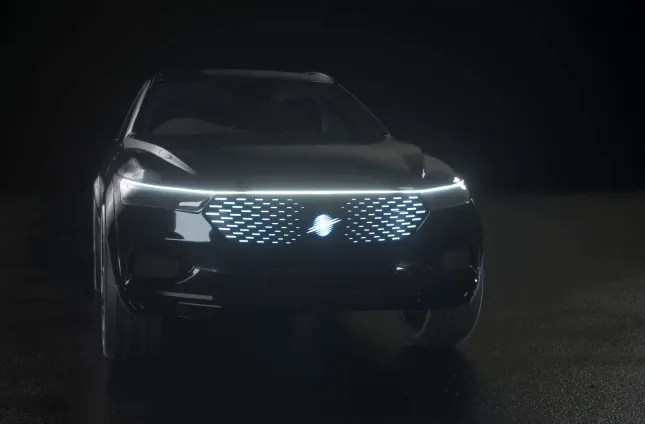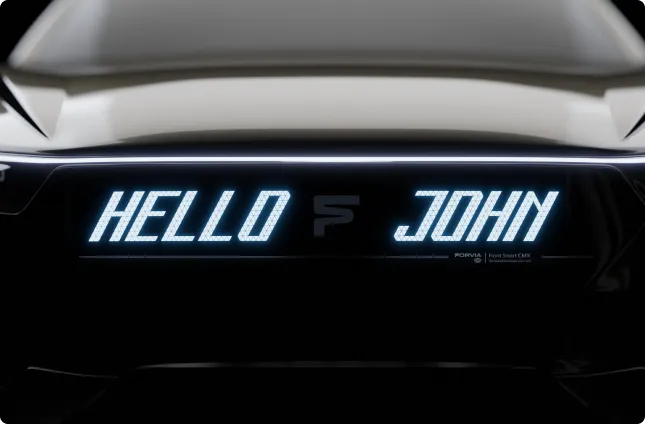The new front of vehicles allowing brand personalization and automated driving

Electric vehicles (EVs) offer unique design opportunities for the front vehicle signature, now a central brand face without the need for classic engine cooling. Our front phygital shield, integrating sensors and lighting, respects appearances in both day and night, blending design with safety functions like protecting parking assistants and automatic distance control systems. Additionally, optional heating ensures reliable performance in bad weather, crucial for autonomous driving.
Key features

New possibilities for front face design of your cars
Introducing the Front Phygital Shield (FPS) a revolutionary approach to automotive front face design. Engineered to enhance aesthetic appeal both during the day and at night, FPS offers a highly attractive appearance. Our in-house capabilities enable unparalleled design flexibility, providing a wide range of surface treatments to suit diverse styling preferences.

Inbuilt light and secured sensor functions inside the shield
The Front Phygital Shield (FPS) integrates high-performing light functions, ensuring compliance with legal lighting standards while offering ample space for multiple sensors and lighting systems. Its design prioritizes versatility and functional reliability, especially in adverse weather conditions. The integrated heating system within the FPS secures sensor functionality, maintaining performance and accuracy despite challenging external elements.

Plug & play assembly - up to 8 layers assembled at once
The Front Phygital Shield (FPS) epitomizes production efficiency, showcasing the ability to assemble up to eight layers in a single step. This one-piece construction method not only exemplifies our mastery in merging plastic modeling, electronic integration, and lighting design, but also significantly streamlines the production process. By integrating up to eight layers simultaneously, the FPS allows for a reduction of up to 50% in assembly steps during production.

Dynamic display for enhanced interactivity with the car
The FPS allows to create scenario for dynamic display according to the actions carried-out by the driver. It can “welcome” the driver to its arrival, inform charging status or display tailored information.
Technical specificities
Modularity
Lighting
Sensors
Heating
Styling

Key figures
The front phygital shield is a step forward in sustainable automotive design
An innovation resulting from extensive research in lighting, sensor integration, and the modeling of car front faces.

Managing Director Lighting at FORVIA HELLA
Related products




